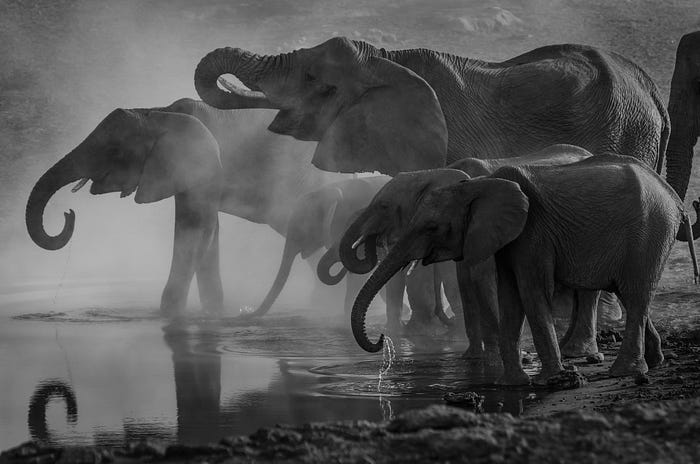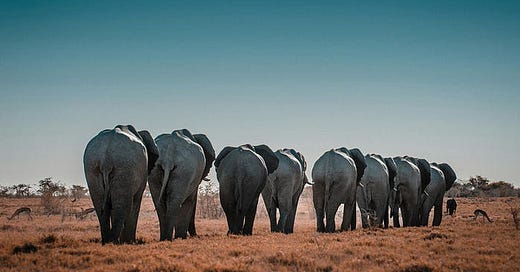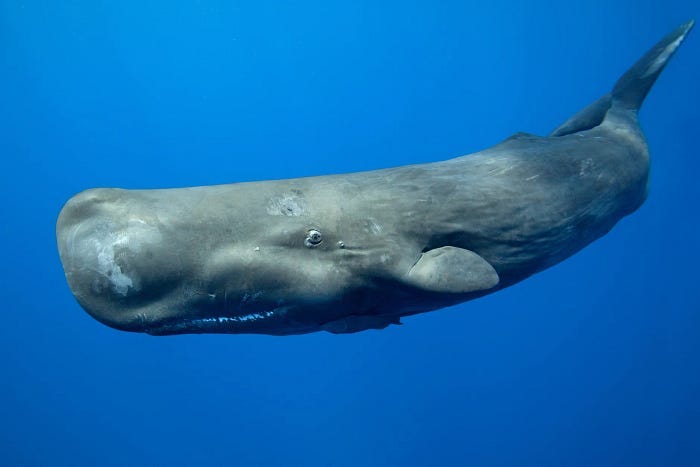Culture was always thought to be something specific to humans.
Many thought only our species could share knowledge from generation to generation, including music, language, traditions, etc. But not anymore. Scientists now argue that this view is anthropocentric (human-biased).
An animal can’t speak a language or create music as we do.
Ethologists and scientists suggest thinking about culture differently. If we do so, we could realize that animals have always shared knowledge and information. Right in front of us.
Animals do have culture.
What Is Culture?
It’s all a matter of definition.
In science, questions and definitions shape the type of research we conduct. For example, Descartes said that animals were automatons or machines, so there was no reason to study them. This changed since then.
One popular concept of culture is the one proposed by Edward Tylor:
“That complex whole which includes knowledge, belief, art, morals, law, custom, and any other capabilities and habits acquired by man as a member of society.“
Here, culture is used in 2 ways:
The way we do things.
Intellectual and artistic activity.
If we think about a culture like this, it is evident that no other animals have it.
However, this definition is too human-biased. It suits us as a species, but it is not inclusive. Animals don’t speak a language and play music. This definition does not cover the basics of how culture arises.
Whitehead and Rendell, two whale scientists, have a different opinion.

Redefining Culture
These scientists have been studying social learning in cetaceans.
For them, culture should not be defined as an intellectual or artistic activity but as information or behavior learned through social learning. This is their exact definition:
“Culture is information or behavior -shared within a community- which is acquired from conspecifics through some form of social learning.” (Whitehead and Rendell, 2014, p. 12).
This information has two attributes:
It is socially learned.
Is shared within a social community.
Let’s see some examples.
Culture in Elephants
Elephants are large highly intelligent mammals.
They belong to the family Elephantidae, which has 3 species: the African bush elephant (Loxodonta africana), the African forest elephant (Loxodonta cyclotis), and the Asian elephant (Elephas Maximus).
They live in complex social structures.
They live in a matriarchal society. Usually, the oldest female is the matriarch, representing the family's history and knowledge. The matriarch makes decisions about where to go and for how long.
Younglins must learn from her because someone will be her successor.
Knowledge is key to elephant survival. The matriarch knows everything, including where to go, threats, and how to make decisions based on previous experiences.
This is evidence of culture.
Elephants' complex social structures share information and behaviors within a community learned through social learning.

Culture in Cetaceans
Cetaceans also show strong evidence for culture.
They learn from imitation, vocal learning, and even teaching, although the latter is more debatable (Mann, 2020; Whitehead & Rendell, 2014). Two cetacean species have been impressing scientists for decades: sperm whales and orcas.
Let’s see why.
Sperm Whales
Sperm whales (Physeter macrocephalus) live in clans.
These are complex social structures the matriarch leads, just like in elephants. They communicate through each other using codas, short bursts of sound that carry information about the identity, behavior, and maybe the emotional state of individual sperm whales.
Notably, codas vary between different groups, almost like dialects.
Genetics does not drive this variation. Sperm whales learn them throughout their lives, just as kids learn a new language. So far, five vocal clans have been documented in the South Pacific.
Vocal clans are cultural entities.
They are information and behavior shared within a community through social learning.
Orcas
Orcas (Orcinus orca) are known as the ocean’s apex predators.
They also live in a complex social structure called pods led by a matriarchal. As in elephants, she carries the information and knowledge of all her pod. These animals have insane intelligence and complex communication systems.
They whistle, click using echolocation, and call.
They have their own vocal dialects, which, like those of sperm whales, are learned. This means that their communication is not driven by genetics. For example, captive younger orcas will adopt the calls of the animals they are housed with, not from the population they came from.
Orcas’ behavior can drastically change from pod to pod because of ecotypes.
They differ in appearance, diet, and behavior. For example, resident orcas in the North of Canada eat mainly fish, while transient orcas feed from other marine mammals.
Their hunting strategies also vary from pod to pod.
Orcas in the Antarctic swim coordinately to create waves to take down seals sitting on ice. Orcas in Patagonia, Argentina, are known to literally get out of the water to hunt seals, a behavior called intentional stranding.
Orca’s decisions make them evolve into different ecotypes.
This was thought to be unique in humans. Not anymore. They are culturally driven diversification that also drives the evolution of genetic patterns, just as their food preferences.
This is, again, evidence for culture.

Lessons from these animals
Our ignorance created hell for some cetaceans.
We captured them without knowing anything about their behavior and culture. We created tanks and made them do shows with unnatural behaviors. Just for human entertainment.
We gave fish to 3 mammal-eating orcas without even knowing their diet.
For centuries, we humans tried to answer what other animals are really like us.
This led to an anthropocentric perspective on studying and interacting with them. We attributed them to our capabilities and our way of seeing, touching, hearing, and experiencing the world.
However, the right question was always “What are other animals like?”

Animals are incredible.
They continually amaze us with their unique colors, behaviors, and the complex ecosystems they inhabit.
In Cognitive Creatures, you will discover their secrets and learn why they are crucial for our planet.
Some Questions For You
What other animals do you think have culture?
What is your favorite cetacean? Have you ever seen them in the wild?
What animal would you like to learn about? We will write about it!
“With a greater sense of understanding comes a greater sense of wonder”. — Anil Seth.
Until the next time,
Axel and Victoria.
📚 References
Mann, J. (Ed.). (2020). Deep thinkers: Inside the minds of whales, dolphins, and porpoises. University of Chicago Press.
Whitehead, H., & Rendell, L. (2014). The cultural lives of whales and dolphins. University of Chicago Press.






